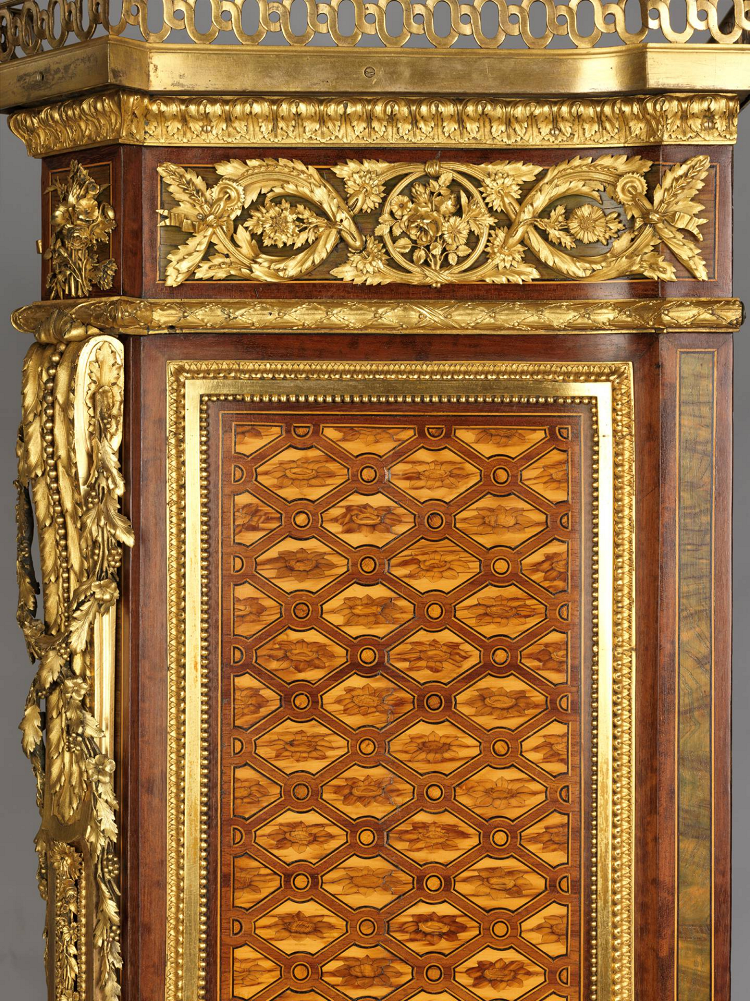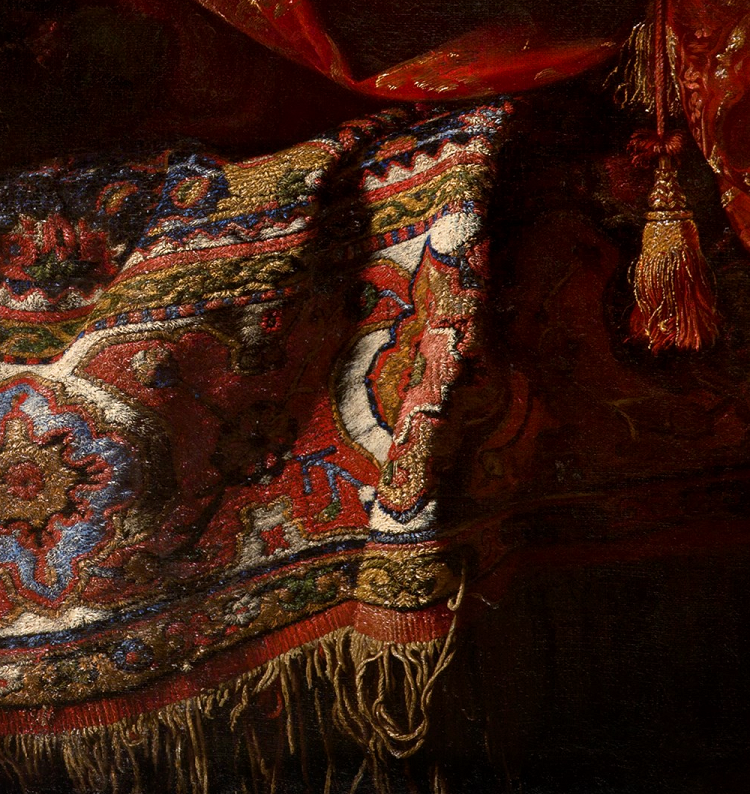 |
| The oval bronze plaque is a later replacement - possibly even done by Riesener, himself - for the original marquetry medallion. |
 |
| Like much of Riesener's work for Marie Antoinette, he has included her initials in the bronze doré frieze. |
*
*
 |
| With its original marquetry intact, this nearly identical commode - one of the three - is in the collection of Versailles. |
 |
| The commode is a feature of the restored décor of Marie Antoinette's cabinet intérieur or cabinet doré. |
*
Secrétaire à abattant. Marquetry removed and re-veneered and the central medallion added, circa 1794–1825. Materials: Oak, burr wood (probably yew), purplewood, stained woods, ebony or ebonized wood, box, gilt bronze, Carrara marble. Ordered for the queen's private rooms at the château de Marly, the desk and corner cabinet (along with a matching chest of drawers) were instead sent to Versailles in February 1783 and installed in her cabinet intérieur. They remained there less than a year before being sent to Marly as originally intended. But the queen rarely visited Marly and only three weeks later they were returned to Versailles where they were to be used in her new ground floor apartment.
*
Encoignure (corner cabinet), en suite with the above desk. Marquetry removed and re-veneered circa 1794–1825. Materials: Oak, burr wood (probably yew), purplewood, stained woods, ebony or ebonized wood, box, gilt bronze, Carrara marble.
*
*
Much of the marquetry decoration of eighteenth-century furniture was originally fairly colorful, a color that has faded markedly over time. A great variety of woods were used - their color both natural and dyed - and the combinations were chosen with consideration for the overall scheme of the settings for which the finished furniture was intended. This particular piece was specifically designed for its place in the queen's cabinet intérieur and it echoed the coloration of the newly-made embroidered silk wall hangings designed by Jacques Gondoin; the pastoral trophy at the center of the commode was created to match a similar passage in the wall fabric. Below is the Wallace Collection's imagined recreation/restoration of Riesener's commode in its original state, something which they based on traces of color that remain on the piece. While I believe that the color here may be just a bit more intense than it ever actually was, it's still a fascinating thing to ponder. Also something to ponder is whether the passage of time and the loss of all that color, like the loss of the polychrome of antique statuary and architecture, has been an improvement...?































































